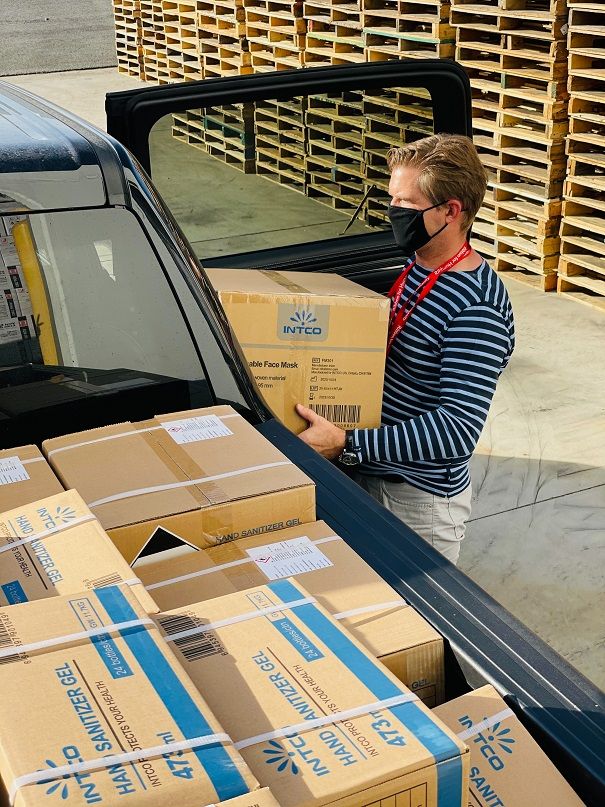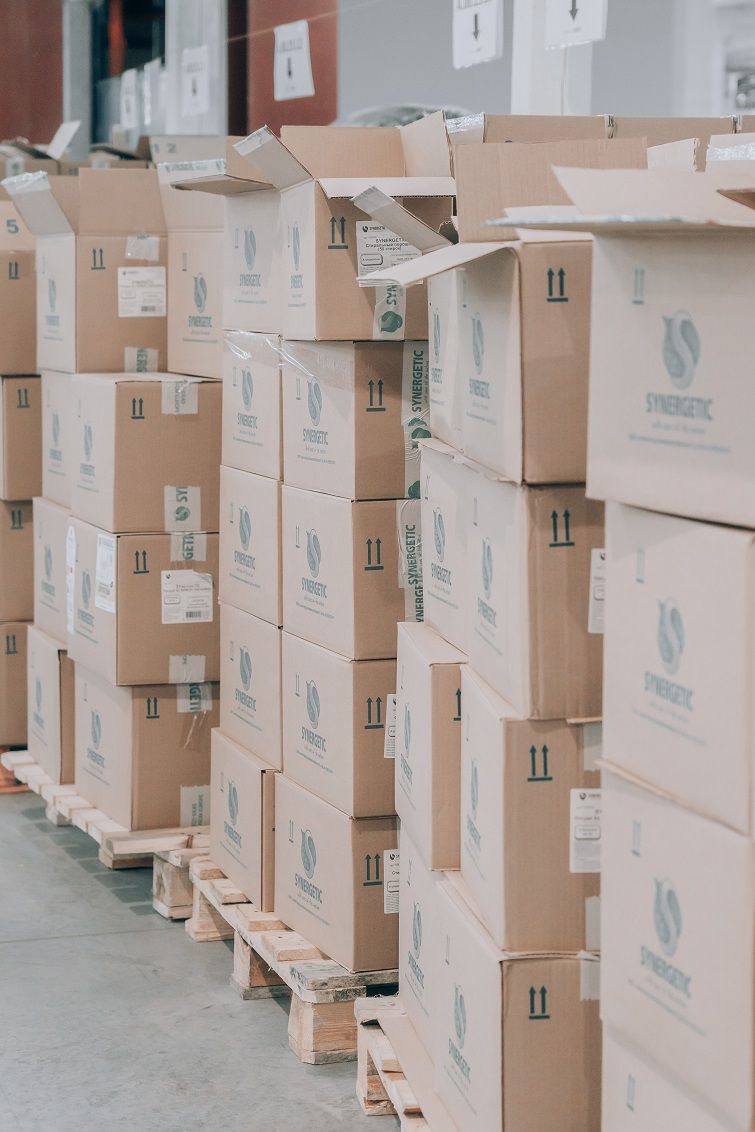The Returns Management Process + 6 Easy Ways to Improve it
A considerable amount of ordered items online return. Some online shops make the return process difficult for consumers to eliminate returns. But, on the other hand, most customers say they would buy again if the returns process were easy. Therefore, it is essential to allow returns to keep customers coming back. The returns management process is one of the most critical aspects of every business, so let us get to it in detail.
Babak Heydari
Maart 23, 2022
The Returns Management Process
Returns management is an essential part of every customer and business relationship. Good customer service consists of timely repairs, replacement of damaged items, and credits for returned items. Returns management service helps online and offline retailers reach responsive customer service through cost-efficient customer and return processes and policies. Instant response to customers' requests, traceability, flexibility, and automation of the returning process are critical features of the application. The supply chain is an essential part of returns management. It is about collecting, organizing, and restocking returned products. However, there is a difference between reverse logistics and returns management. Reverse logistics is an essential part of the returns management process. It helps retrieve returned items, sort them and deliver orders. The returns management process is comprehensive. It may include anything from receiving customer complaints to return management process implementation. Returns management service is critical for every business because more than 90 percent of customers consider the availability of returning when deciding to order or share a shop's address in their social cycle.
What is the Returns Management Process Stages?
The returns management process has five steps: return request, business approval, reverse logistics, inspection, and restocking items in the warehouse. The first step is the customer return request. The second is when the business certifies the item return to meet return requirements. Then they use reverse logistics to ship the returned item to the distribution center or warehouse for the rest of the process. The fourth step of the process is inspection. Once the returned product arrives at the intended center, they inspect its condition. The last step of the returns management process is restocking the items for resale, in case it is possible to recondition them and use them again.
What are the Requirements of Returns Management?
The customer service and on top of that, chain of returning should be friendly for the customers and logical for business. A problem-free refund logistics can bring such an outcome. The followings are three requirements of an effective returns management service for online shops. First, businesses should consider this chain of returning to implement a successful shopping process for customers.
Return Process Speed
The automatic workflows, labels, and user profiles are three tools for increasing the speed of the returns management process. Automatic workflows use data collection and analysis to increase the speed of the process. It allows the workforce to spend less time and energy specifying data points and more efficiency. After the automated workflow creates a return process authorization, it is time for labeling. Providing documents help to make sure that customers have a convenient returns process. User profiles facilitate the return management process by storing and sharing customer information and conditions.

Visibility in the Returns Management Process
The three most effective methods for increasing visibility in the returns management process are online portals and websites, carrier integration, and barcode data identifiers. Websites are great tools for today's business. They allow users to engage in activities regardless of their location and time zone. They are also great tools for return management, especially with global supply chain expansion. With one accessibility, producers and third-party service providers can access real-time updates and essential data to do their job. Carrier integration connects tracking numbers to return process authorizations. In addition, it provides shipment visibility within websites and automated notifications. Finally, barcode data identifiers ensure that inbound shipment information, such as product name and the product's current condition, is complete and accurate.
Return Process Control
The returns management process should have three contract points regulatory compliance, reconciliation, and quality assurance. Compliance covers all aspects of the reverse logistics process, from geographically to industry-specific regulations. Reconciliation considers product engineering to determine returned products' resale value. The aim is to balance customer satisfaction and internal financial control. The quality assurance process combines various departments working collaboratively. The goal here is to optimize quality further.
Controllable and Uncontrollable Returns
Customers return products because of defects, poor packaging, or simply ordering the wrong item. The returned items go to controllable or uncontrollable categories depending on the reason. Controllable returns come from displaying products to shipping them. Businesses can manage these returns by adding proper images and correct information about every product on the website to pack the orders carefully. Some ways to reduce controllable returns include: - Work with suppliers with high-quality goods; - Improve packaging to prevent possible damages; - Ensure that the items are packed with proper care; - Track the order and notify the customers about delivery time; - Work with services that are famous for delivering orders undamaged. Generally, uncontrollable returns are out of businesses' control. For instance, the customers may order the incorrect size of shirt or purchase several pairs of shoes to check all of them and return what they do not want. Uncontrollable returns often grow during the holiday season when people buy gifts for others and are given a gift receipt, making it easier for the gift to be returned.
What are the Most Important Returns Management Considerations?
Four considerations towards the returns management process help understand the flow of returning products in the case of any deficiency in delivery. These considerations in the chain of returning affect the whole business and positively affect the bottom line product inventory. These considerations in the returning chain affect the whole business and positively affect the bottom line product inventory. Monitoring returns help to decrease the recurrence of the issue. So to have good refund logistics in place, try to flow the following aspects through your operational aspects of the business.
Volume in Return Process
Knowing what items are returned repeatedly goes a long way in determining the next steps. Therefore, it is suggested to consider the production process. The third-party logistics companies help retailers by reporting the number of returns. They also specify the most returned category of goods in the chain of returning process. Businesses can use the mentioned reports for improving the return process and, more importantly, to check the intended category for decreasing possible returns in the future.

Percent of Sales in the Returns Management Process
The business should know the percentage of lost sales to determine its effect on the returns management. In addition, the 3PLs have the tools and systems to repackage refurbished items for new shipments.
Condition of Returned Product
It would be best to understand what went wrong to solve the problem. For example, some third-party logistics companies have quality assurance units to work on intended products as a value-added service.
Financial Value in The Returns Management Process
It is essential to assess the value of a returned product and see what part can be reused to provide value back into the shop. The third-party logistic companies report on the number of returned items. In addition, online shops can track how much the returns cost by using these reports.
Benefits of the Returns Management
The returns management process involves the same steps as traditional forward logistics, requiring similar efficiencies. There are also benefits such as cost and energy savings, satisfying customers, and improving stability in the market. Let us take a closer look at the benefits:
Better Profit Margins with Chain of Returning
Reverse logistics offer practical methods to decrease costs, including reducing transportation expenses and reselling returned items. If the value is regained from resold items, the profit margin improves. It is also vital for the rest of the system to function efficiently.
Increased Customer Satisfaction
The way businesses manage returns could affect customers' feelings towards their brand. For example, defective product delivery or poor returns functioning may lead to a bad experience for the customer. Offering options to the customers for returning items can go a long way to raise satisfaction among them. The most popular options include: - Providing a full repayment no matter the reason; - Not demanding the original receipt if returned to a physical store; - Not requiring the original packaging.
Reduced Waste in Return Process
The returns management service speeds up repairing, refurbishing, or reusing products. It helps identify ways to reuse, resell or recycle materials that would otherwise result in a dump. It brings profit and helps improve the brand's reputation for social and environmental issues.
How to Improve The Returns Management Process
There are several things every business can do to improve the returns management process, which reduces the number of returns and their expenses for the retailer:
Have a Clear Return Policy
A transparent return process and policy make the returns procedure accessible for the customers and make them happy. It aligns the business and the customers and minimizes frustrations by managing their common expectations. Some popular methods to show the return policy are posting it on the businesses' official social media, having a specified page on your website, or any partner sites.
Consider the Cost of Returns
Retaining customer satisfaction with returns management is essential for success in the market. Customers like it when a business offers free returns. However, it is essential to know how much returns affect the bottom line. It helps to cover the cost of reverse shipping and tracking. It also determines how many work hours are spent managing returns from taking calls to restocking returned products. These calculations can provide compelling insight for retailers. For example, almost 79 percent of customers will not shop from a store that charges return costs, so it is best not to do so.
Examine the Returns Management Process
You can always get a helpful insight about the products and end customers when an item is returned. You can gather the feedback and break it down into several variables, including the product returned, producer, attributes, etc. Then review and examine them to find shared factors. This procedure helps to specify the cause of the problem. Learning from returns leads to developing customer personas and identifying serial returners. Serial returners are purchasers who habitually buy products and return them.
Quick Return Process
Almost 90 percent of customers would stop shopping from stores that take too much time to issue credit. Almost 89 percent are less likely to suggest a shop to their family and friends if it takes too long to do it. These numbers have only increased as returns processes with more demanding consumer preferences get faster.

Track the Returns State
Reliable businesses always provide transparency in the shipping process. For instance, they notify the customers when the product is packaged and expect it. The returns management process should have the same transparency policy. For example, customers prefer to know the item's location and the exchange or refund condition. The text and email alerts are great for informing customers once their return has been received and repaid. This way, they make sure of the current location. It is always essential to provide visibility into this process by analyzing data for their return shipment.
Use a Distribution Center for Returns Management Process
As an offline or online shop expands, the business owner may not have the time to manage the product returns process. If forward logistics has become a heavy burden for the business, you can use a distribution center specializing in storing, packing, shipping, and dealing with returns management.
Final Thoughts
The returns management process may improve customer satisfaction while keeping business profits. If businesses use it correctly, it brings them a competitive advantage and increases sales. However, you do not need expensive returns management service to improve how you process returns. With our fleet routing software solution, you can have return pickups as part of your delivery process. Improving the returns service's speed and convenience helps deliver a better customer experience and improves the bottom line. To check for yourself and learn more, start your 14-day free trial today.
Onze nieuwsbrief